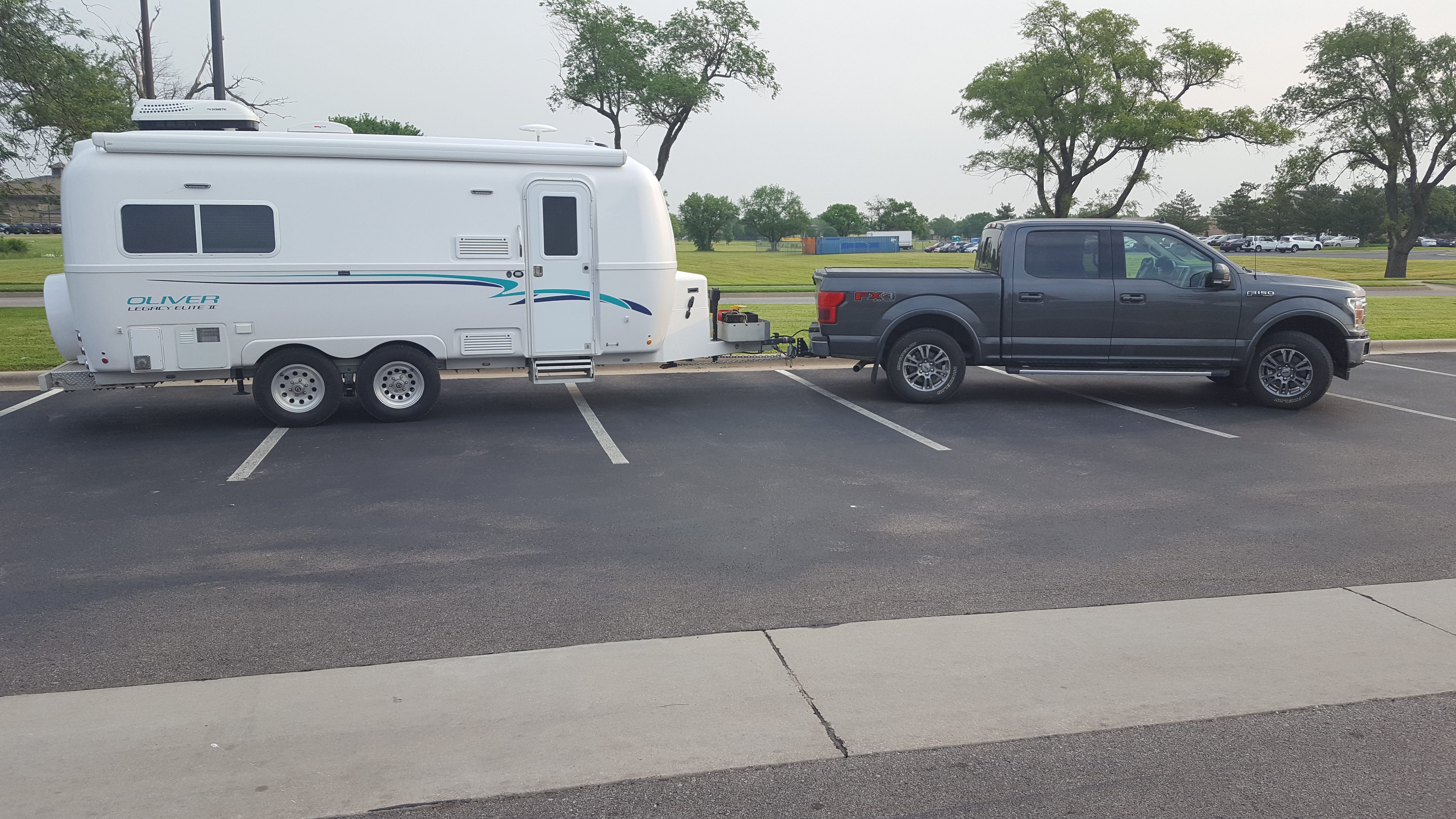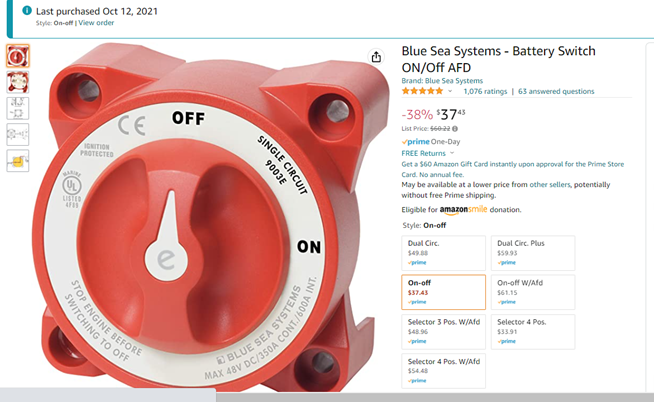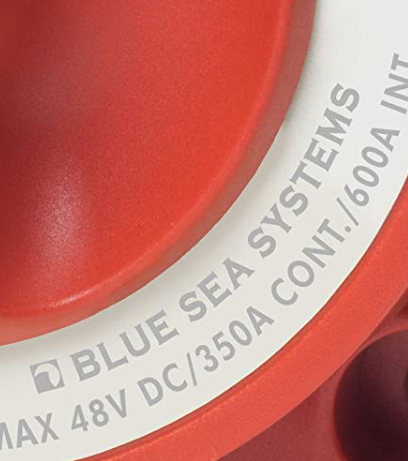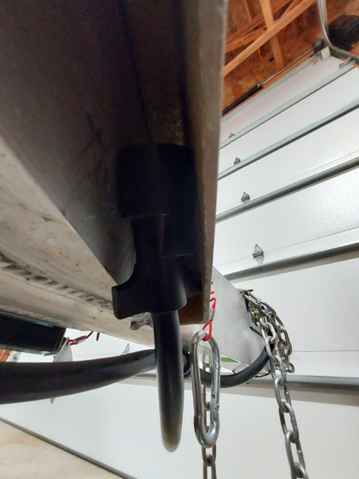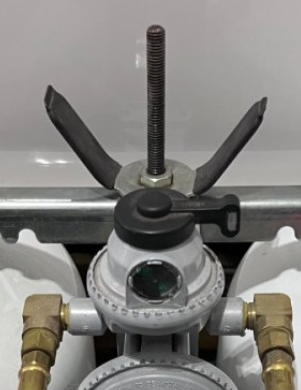-
Posts
2,213 -
Joined
-
Last visited
-
Days Won
63
Everything posted by Geronimo John
-
Bill: Please do split this off into another thread. Every owner of an OE2, and maybe the OE's, needs to know if their jacks are accidents waiting to happen (aluminum) or OTT stout steel ones. This is a true life safety issue for those with aluminum. Thank you Sir. GJ
-
I really enjoyed living in Utah for a dozen years. With our Ollie's camping there is MUCH more enjoyable. But do take note of the temperature history for the time and area you are planning on visiting. GJ
-

Lithium batteries
Geronimo John replied to DandD's topic in Welcome To The Oliver Travel Trailer Forums
This is very similar to the response I got last summer for our 3 Battleborns being on top of a mountain in OK where the deep winter potential for zero degrees for a few weeks was my concern with no shore power. They advised in my case to charge to 60% and kill ALL DC loads (Master Kill Switch yea once again!). At even 3% for 9 months it would be down to 33% SOC worst case and winter would have been in a very distant past by then. Good news. -
Very true! The Battleborns also have internal management for overcurrent and temperature. And also are the same chemistry as the Lithionics. As such, I don't worry about our batteries running away to thermal overload. What I do keep in mind is the remote possibility of something drawing less than 300 amps when it should not be, and having a way to shut that down too. For fire.... belt and suspenders. @ $40 bucks and some DYI time.....no brainer.... PS: Additional benefit is having a simple way to isolate every DC parasitic current draw with a flip of a switch. As a sage owner reminded me some time ago when I said I just took off a terminal wire... His response was something like "Every weekend???" Slam dunk great response. I know at least one of you is out there smiling now. 🙂
-
Ralph: Very excellent response. My system is the less complex Battleborn/Victron 712, Orion DC/DC DYI system. Periodically (every few weeks) when I stumble into some shore power, I equalize the batteries. Once they achieve 14.2 volts plus 90 minutes (per Battleborn for my PD 4060 converter) I need to let the system set several hours and it will settle to the "Full Rested Charge" of 13.7 or 13.8 volts. If the 712 SOC is reading 100% I'm done. If not, I reset the meter and it then shows 100% SOC at the full charge voltage. QUETION For Lithionics Owners: On the very nice Lithionics system, is a reset of the SOC required after equalization charge as well? If so, that could explain Donna and Jim's SOC discrepancy. QUESTION For Battleborn Owners: Is my understanding and equalization process correct? Thanks GJ
-
As a former USAF Engineer and Fire Marshall, I had quite an internal discussion with myself on that very question. Below is the logic I ended up with to select the location I used. I for sure would like other owners to comment. Wherever you put it, it is better to have it than not to have it. My greatest fear is that it will happen at night when I am not present with family occupants. With these thoughts in mind, my fire plan that all using the trailer are advised of is: If you smell, see, or hear smoke look get others out of the trailer and have them call for help (911 or yell fire if others are about) If you can see the cause, fix it or extinguish it with the closet mounted extinguisher. If for what ever reason you can't, just get out of the trailer immediately. Most importantly, I do not want family members having to hunt for a master switch inside during an emergency. Get out of the trailer. So, my first decision of inside or outside was made. Outside access. Some considerations: You don't want to be running a lot of extra wire length of 4/0 300 amp cable for a lot o reasons. It needs to be protected from weather and be ahead of the Victron Shunt and all other battery Positive feeds. Therefore the location was obvious: the battery box just inside of the access door. For connection, I used a piece of copper buss bar for the connection from the terminal to the switch as other owners have posted. Note: For anyone sleeping in our Ollie, I ensure that the compartment is unlocked and they know how to access the closet fire extinguisher as well. And, just to head off a comment, yes, I am taking a risk that somebody may steal our Litho's while the box is unlocked. A risk I accept. Owners: I really would appreciate hearing the negatives of this decision. Only way to learn is to listen. So fire away.
-
The key word in my post was FED. Fires being fed power from lithiums can transfer a lot of power to the electrical short(s) as compared to the instantaneous power that LA and AGM batteries can generate. I witnessed this at a solar farm where the battery storage building had a short downstream of the Litho's and the fire fighters were in a pickle as the breakers fused and they could not kill the power to the short. What started as a rather large short circuit fed by the litho's ended up turning into a major fire that then involved the batteries themselves. They were there for several days. I absolutely recommend having a Master Shut Off switch that is rated for more amps than the fuse is. In our case many of use 300 amp fuses to power 3000 watt inverters. For this the Blue Seas 350 amp rated switch is a great choice. Best peace of mind I have spent on my Ollie.
-

Ideas for Simple DIY Upgrades to Your Travel Trailer
Geronimo John replied to JWalmsley's topic in Oliver Blogs
Excuse me, I'm in trailer #3 and need to leave now. TILT.... -

Houghton a/c youtube re: humidity issues
Geronimo John replied to SteveCr's topic in Ollie Modifications
I He honestly does not know? I'll PM you some thoughts later this weekend. GJ -

Water in shower pan after travel - Auto drain valve
Geronimo John replied to Tom and Doreen's topic in General Discussion
On my OE2 if I have closed the drain valve for travel, I and use the kitchen sink, it will fill the shower drain P-trap and overflow water into the shower drain pan. That resulted in my FIRST wet socks experience. -
- 24 replies
-
- 7 pin
- tail lights
-
(and 2 more)
Tagged with:
-
For us locationally impaired, would you be so kind as to post a picture of your wonderful approach? Mahalo GJ
- 24 replies
-
- 7 pin
- tail lights
-
(and 2 more)
Tagged with:
-

Propane Tank "Wing Nut" Mod
Geronimo John replied to Geronimo John's topic in Mechanical & Technical Tips
I as well. Being in Honolulu and Ollie on the mainland, I could not grab a picture of my mod, but wanted readers to "see" the topic. So I borrowed John D's picture. -

Fuse for the rear jacks
Geronimo John replied to Chris Scarff's topic in Mechanical & Technical Tips
From my perspective the ceramic fuses work just as well as the glass cartage variety as listed above for our Ollie applications. A ceramic fuse contains a blowout and can arch less than a glass ones for high current events. However the down side is that the ceramic ones cost more. Grainger likes it when customers absolutely trust that their products are genuine. Casting stones at Amazon is part of that game, but not totally without merit. Problem is knockoff products used in critical applications must work as advertised... such a fuses. Hence for fuses, axle bearings and seals I buy from "more trusted" vendors than some Amazon resellers are. That said I have bought fuses stocked at Amazon and they appeared to not be knock-offs. So research the reseller if you really want to go that route. -

Fuse for the rear jacks
Geronimo John replied to Chris Scarff's topic in Mechanical & Technical Tips
I too have stumbled over the terminology. It is important that owners know where to use Slow Blow/Time Delay or Fast Acting fuses. Fuses are application specific. Motors with high current inrush need the SB/TD type. Most electronics do not. Below is what I found from 9 years ago from Viperwk. It is no longer totally inclusive for all manufacturers today, but gives us a pretty good hint. For our jacks, the Bussman MDL would be a good choice. https://www.google.com/search?q=For+fuses%2C+what+is+time+delay+vs.+slow+blow&oq=For+fuses%2C+what+is+time+delay+vs.+slow+blow&aqs=chrome..69i57.10832j0j7&sourceid=chrome&ie=UTF-8 New Haven, CT 10y 42,650 4,167 More 312 and 313 are specifically for Littelfuse. In the glass cartridge variety for the 1/4 x 1 1/4" size, "time delay" fuses are New Edison - MDL Old Edison - BDL Bussmann - MDL Old Bussmann - MSL (http://tinyurl.com/mgjbq2c) Gould - GDL Littelfuse - 313 For "fast acting" New Edison - AGC Old Edison - BGC Bussmann - AGC Gould - GGC Littelfuse - 312 So a fuse that has on it 3A BDL is a 3A slow blow fuse made by the old Edison company. viperrwk -

Propane Tank "Wing Nut" Mod
Geronimo John replied to Geronimo John's topic in Mechanical & Technical Tips
Our approaches tackle different topics. Mine saves time and knuckle damage. I do note that your all-thread rod is MUCH shorter than the one that came on my 2018 OE2. With your shorter all-thread this mod may not be necessary. But it still raise the wing nut up away from the tank shrouds a bit. Yours mod would for sure improve security and is also really easy to do. With your fire arms lock, you have spare cable to raise your wing nut up as well as improving security too. I like it! -

Trailer Length vs "pretty" campsite
Geronimo John replied to Dennis and Melissa's topic in General Discussion
Good point Mountainman! To that I add that an LE2 when being towed pretty much is in the wind shadow of our full sized Tow Vehicles. With Ollie's rounded shape the aerodynamic drag created is minimal compared to just about all "Stick Builts" and wider fiberglass trailers. I have taken many showers in trailers over the years. Not once have I not dried the shower stall for sanitation, mold/mildew prevention or just to make it look nice for my bride. The time it takes to dry our Ollie bath after a shower is less than a minute or two to more than to dry a dry bath shower. Yet as said above, having the square footage for other uses is huge in our well laid out LE2's. -
I was reading John Davies post for improving the propane tank hoses and it reminded me of a mod I made several years ago. My shorter OEM Propane tanks leaves a lot of excess all-thread to spin up and down at every tank service. I thought about cutting the all-thread shorter, but discarded the idea as the next owner down the road may be a cold weather camper and want the taller tanks. My solution was to grab out of my garage a pair of washers and some tubing that would fit over the all-thread. I cut the tubing to leave about an inch of all-thread showing. One washer on each side of the tubing and I only have to spin off the wing nut about an inch. Saves time and knuckle damage. Cost: $0.00 GJ
-

Shackles flipped on trailer suspension
Geronimo John replied to johnwen's topic in General Discussion
Now that works. Short. Easy to Remember = Effective Communication! Thanks! -

Shackles flipped on trailer suspension
Geronimo John replied to johnwen's topic in General Discussion
I read this as running the flipped axle over a curb to raise it and correcting the issue. I also read this as running the flipped axle over a 4X4 to raise it and correcting the issue. So it appears to me that both John D and topgun2 agree in the approach by raising the flipped axle. HOWEVER, In Jim and Frances video at 1:50 he shows and states "Put it (The jack) under the axle that is correct" and then shows raising the correct axle and the "Wonky/Flipped" axle bangs into place. Ok guys, you now have me confused. Will both approaches work? Please clarify. GJ PS: Scotty: I agree with NOT jacking under the axles!

